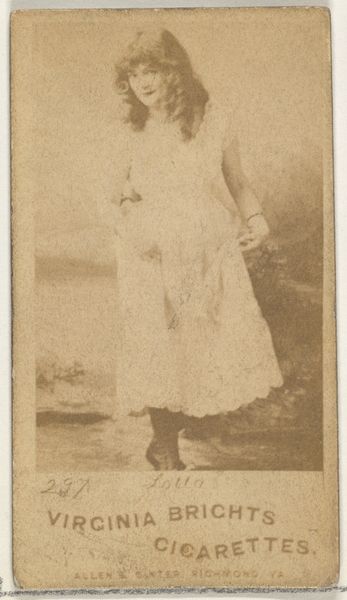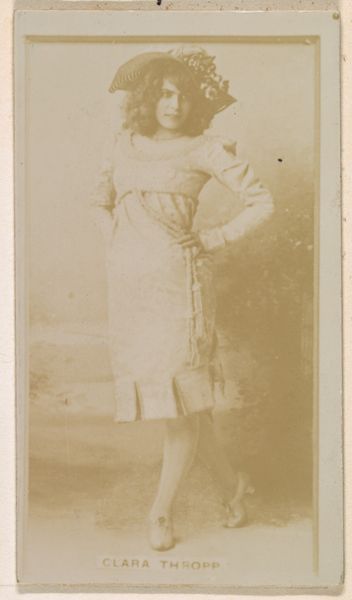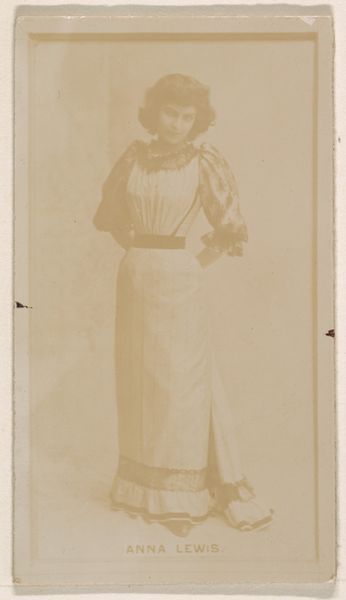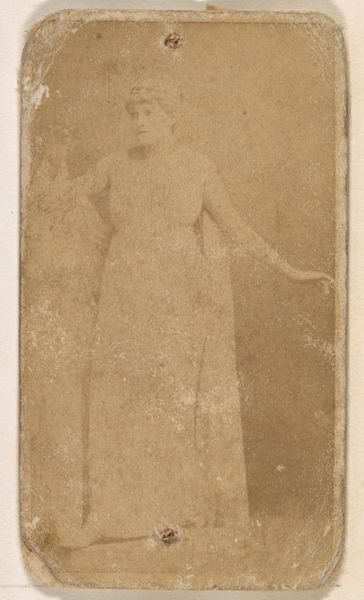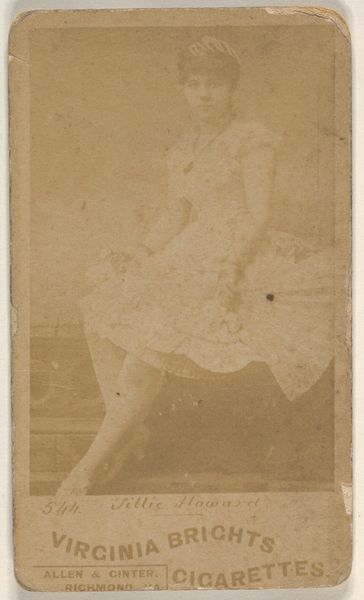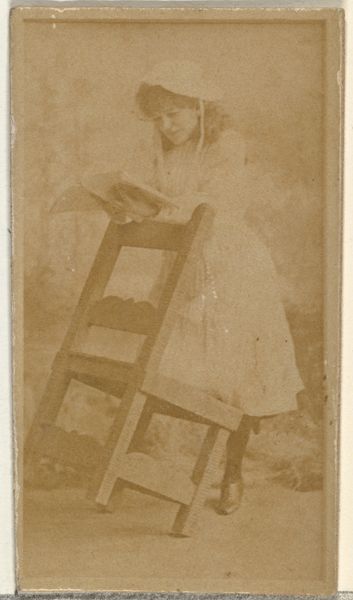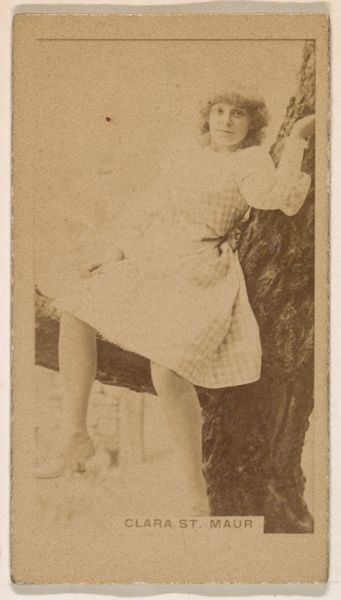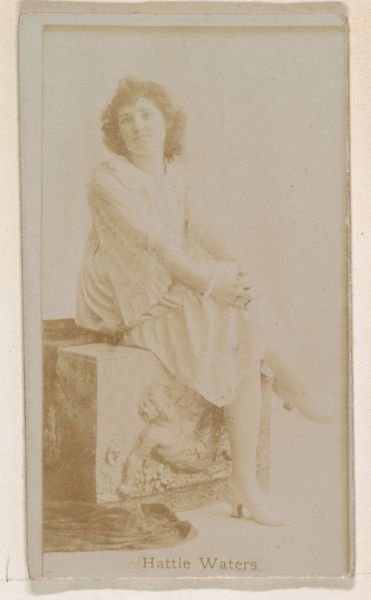![[Actress posing by prop wooden fence], from the Actors and Actresses series (N145-8) issued by Duke Sons & Co. to promote Duke Cigarettes by W. Duke, Sons & Co.](/_next/image?url=https%3A%2F%2Fd2w8kbdekdi1gv.cloudfront.net%2FeyJidWNrZXQiOiAiYXJ0ZXJhLWltYWdlcy1idWNrZXQiLCAia2V5IjogImFydHdvcmtzLzdjZGJmOTA2LTUxOGYtNDVmNy04ZjIyLTUyNWRlODZkMDg1YS83Y2RiZjkwNi01MThmLTQ1ZjctOGYyMi01MjVkZTg2ZDA4NWFfZnVsbC5qcGciLCAiZWRpdHMiOiB7InJlc2l6ZSI6IHsid2lkdGgiOiAxOTIwLCAiaGVpZ2h0IjogMTkyMCwgImZpdCI6ICJpbnNpZGUifX19&w=3840&q=75)
[Actress posing by prop wooden fence], from the Actors and Actresses series (N145-8) issued by Duke Sons & Co. to promote Duke Cigarettes 1890 - 1895
0:00
0:00
print, photography
#
portrait
# print
#
photography
Dimensions: Sheet: 2 11/16 × 1 3/8 in. (6.8 × 3.5 cm)
Copyright: Public Domain
Editor: Here we have “[Actress posing by prop wooden fence]” made around 1890 by W. Duke, Sons & Co.. It's a photographic print, likely a promotional item. There’s a melancholy air about this small card. How would you approach it? Curator: I'm immediately drawn to the economic context. It’s not just a portrait, it’s advertising. Think about the industrial processes that allowed for mass-produced prints like these to become commonplace through products like Duke Cigarettes. The subject, the actress, becomes another commodity within the cigarette market, packaged and consumed alongside tobacco. The raw materials, the paper, the chemicals involved in processing the image itself... all tied to wider networks of extraction and capital. Editor: So, you're seeing the image as less about the actress herself, and more about the mechanisms that produced and distributed it? Curator: Precisely. The photograph isn't merely capturing an image, it's participating in the cultural construction of value. The actress's image gains worth as a vehicle for selling cigarettes. But also consider the "prop" fence, constructed to create an artificial scene to sell both a persona and the cigarettes themselves. Are we consuming artifice on multiple levels? Editor: That’s interesting. I hadn't considered the artificiality extending beyond the actress's pose, but the constructed environment is just as significant in marketing and distributing consumer goods. So, by looking at the material production and purpose, we can unravel a deeper story about late 19th century consumerism. Curator: Exactly. We begin to understand how materials, labor, and visual culture intersected. Even the choice of printing method speaks to mass production. What appears simple holds much significance, from labor to material choices. Editor: I hadn't really considered how something so seemingly simple could contain so much within it. Thank you for opening my eyes.
Comments
No comments
Be the first to comment and join the conversation on the ultimate creative platform.

